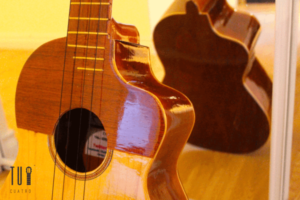The charango is a captivating plucked string instrument that originated in Bolivia. It has since gained popularity in neighboring countries such as Peru, Chile, and Argentina, especially within Andean folk music. What sets the charango apart is its remarkable versatility. You can use it for solo performances or to accompany other instruments, which makes it an essential element of traditional Andean music.
Artisans originally crafted the charango using the armor of an armadillo. The Bolivian government later banned this practice to protect the animals. Today, makers use high-quality wood to build charangos while maintaining their beautiful sound and rich heritage.
The charango’s sound is high-pitched and distinctive. Its unique strumming pattern can be challenging for guitar players to master. To appreciate its sound, listen to Rafael Martinez, a talented Chilean charango player who honors and celebrates the instrument’s origins in Bolivia.
Learning about the charango is not just about the music; it’s a journey into cultural heritage. Early craftsmen made the first charangos using an armadillo’s armor, reflecting their creativity and resourcefulness. While this practice is now obsolete, the charango continues to thrive as a vital component of Andean folk music. It serves as a powerful symbol of cultural identity in Bolivia and beyond.
With its high-pitched, distinctive sound and versatility as both a solo and accompanying instrument, the charango is truly one-of-a-kind. If you’re looking to expand your musical horizons, we highly recommend exploring the fascinating history and unique qualities of the charango.
Don’t let this instrument fly under the radar! The charango offers a rich tapestry of sound and tradition worth discovering, and you can help keep it alive.
Learn to Play the Charango with TuCuatro
TuCuatro offers a comprehensive online education system for learning folkloric and exotic musical instruments. The platform aims to make music education accessible through a one-stop portal that provides online courses, instructional videos, and virtual support from dedicated musicians and e-learning specialists. Although TuCuatro’s flagship courses focus on the Venezuelan Cuatro, Ukulele, Bandola Llanera, and Cavaquinho, the platform’s teaching philosophy and resources empower students to apply similar techniques to related instruments like the charango.
Professional musicians designed the curriculum to offer free access to courses that guide you step by step. This comprehensive approach helps learners develop dexterity, rhythm, and creativity while mastering their chosen instrument. If you love Andean folk music and want to explore the charango’s unique sound, TuCuatro’s supportive community and flexible learning tools can help you get started.
Ready to begin your musical journey? Sign up for TuCuatro’s free online courses and discover how our interactive lessons and expert guidance can make learning the charango and other instruments fun and rewarding.
You can read more on Wikipedia.







































